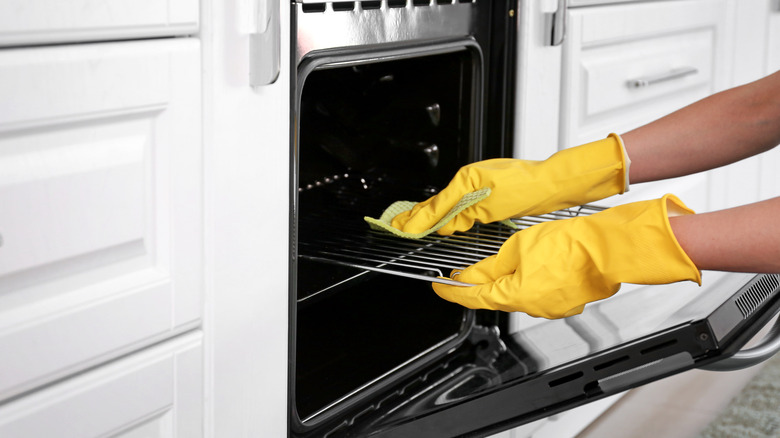This Is Why Your Oven Isn't Working Properly, According To Paul Hollywood
British artisan baker Paul Hollywood has been a judge on "The Great British Baking Show" (or as it's known in the U.K., "The Great British Bake-Off") since 2010, so he knows a thing or two about the sort of things that can go wrong when baking. But not all of those things involve the skill of the baker — or even the quality of the ingredients. Rather, some may involve issues relating to your oven, as Hollywood points out on the "fixing mistakes" page of his website. In fact, three of the baking issues the great British bread baker identifies are all potentially attributable to baking with an oven that fails to heat evenly. These issues include cakes that stubbornly slope to one side, sinking-fruit fruit cakes and loaves, and the dreaded "soggy-bottomed" pie.
One way to tell if your oven is heating evenly is to make several pieces of toast, according to the King Arthur Flour Baking Blog. Simply preheat your oven to 350-degrees Fahrenheit, place slices of bread throughout the oven, and leave them to toast for 18 minutes. If some of the slices turn out more well-done than others, you may have hot spots in your oven. But this does not mean it's time to go appliance shopping. In fact, if your oven isn't working properly, there may be something very simple you can do about it, according to Hollywood.
Here's the simple reason why your oven might not be heating properly
If your oven is heating unevenly, it may not be your oven's fault, per se, but rather, it may be that your oven is in need of a good scrubbing, according to Paul Hollywood, via Great British Food Awards. "Clean your oven! And not just the glass on the outside," Hollywood advises those who would like to produce better quality home-baked goods. "Clean the inside really thoroughly, because otherwise you get a carbon build-up around the inside, the heat can't circulate and you get hotspots. Which means an uneven rise."
Baked-on carbon deposits "result from grease and other food particles which have all the water inside of them baked out over time," according to Home Steady. "The end result is a hard, crunchy crust of black carbon." To put an end to all that, which can also leave your baked goods with a vaguely burnt smell, you can scrape off carbon build-up with a paint scraper. For particularly stubborn build-up, apply a paste made of baking soda and water and let it work its magic for at least half an hour, and get back to scraping.
Once you have removed the carbon build-up, give the "toast test" another whirl to determine if you are already on the road to better baking.

